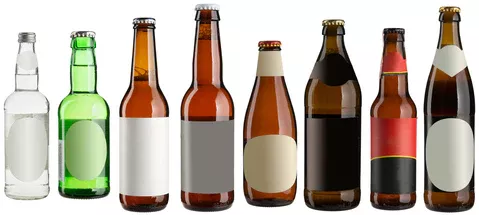Ever wondered why soda and water fill the shelves in plastic, but beer mostly sticks to glass or cans? Plastic seems convenient and lightweight, so why isn't it the go-to for beer?
Beer is rarely sold in PET plastic bottles primarily due to risks of chemical reactions affecting taste and safety, poor gas barrier properties leading to spoilage, and the inability of standard PET to withstand necessary heat sterilization processes.

It turns out that preserving the quality, taste, and safety of beer presents unique challenges that standard plastic bottles struggle to meet. Let's dive into the specific reasons why glass and aluminum remain the champions for beer packaging.
Thinking about grabbing a lightweight plastic bottle of your favorite brew? You probably won't find one easily. What makes plastic, so common elsewhere, unsuitable for beer?
Standard plastic bottles, typically PET, aren't used for beer because they allow oxygen in and CO2 out, potentially reacting with alcohol, and often can't handle the heat needed for pasteurization.

Dive Deeper: The Technical Hurdles for Plastic Beer Bottles
While plastic offers benefits like lower weight and shatter resistance, it poses significant problems for beer quality and stability. Here’s a closer look:
Chemical Interaction Risks:The most common plastic for beverage bottles is Polyethylene Terephthalate (PET). While generally safe for water and soda, concerns arise with alcohol. Plasticizers, like phthalates, are sometimes added during manufacturing. These substances are less soluble in water but can dissolve in ethanol (alcohol). Over time, especially with longer storage, these compounds could potentially leach from the plastic into the beer. This not only affects the beer's taste profile but also raises health concerns. Even the base PET material can have interactions, potentially imparting off-flavors. I recall a project discussion where a client explored PET for a low-alcohol beverage; the testing required to ensure no unwanted migration was extensive.
Gas Permeability Issues:Beer is sensitive to gases. Oxygen getting in causes oxidation, leading to stale, cardboard-like flavors. Carbon dioxide escaping out results in flat beer, losing its characteristic fizz and mouthfeel. Standard PET plastic is significantly more permeable to both O2 and CO2 than glass or aluminum. While advanced barrier technologies exist (multi-layer PET, coatings), they add cost and complexity, often still not matching the performance of traditional materials for the desired shelf life of beer.
Heat Sensitivity During Processing:Many beers undergo pasteurization after filling to ensure microbial stability and extend shelf life. This often involves high temperatures (spraying with hot water). Standard PET bottles can soften, deform, or shrink under these conditions. Furthermore, high temperatures can sometimes accelerate the migration of substances like antimony, a catalyst used in PET production. While heat-set PET bottles exist for processes like hot-fill, they are more expensive and might still not meet the specific requirements for beer pasteurization methods compared to glass or metal.
| Issue | Problem with Standard PET | Impact on Beer |
| Chemical Leaching | Plasticizers/compounds potentially dissolve in alcohol | Off-flavors, potential health concerns |
| Oxygen Ingress | PET is relatively permeable to O2 | Oxidation, stale taste, reduced shelf life |
| Carbon Dioxide Loss | PET allows CO2 to escape | Flat beer, loss of carbonation and mouthfeel |
| Heat Intolerance | Standard PET deforms under pasteurization temperatures | Packaging failure, potential release of substances |
These technical barriers mean that while plastic could be used with significant modifications and cost, glass and aluminum currently offer more reliable and cost-effective solutions for maintaining beer quality.
Why Is Beer Often Sold Primarily in Glass Bottles (and Cans)?
You see rows of glass beer bottles, a classic sight. But is it only glass? And why is glass such a strong preference over plastic?
Glass is favored for beer due to its excellent barrier properties (blocking gas exchange), chemical inertness (not reacting with beer), and ability to withstand pasteurization. Aluminum cans share these key advantages.
Therefore, while plastic has advantages in weight and durability, glass and aluminum provide the essential protection beer needs against its main enemies: oxygen, CO2 loss, light (for cans and dark glass), and chemical contamination, while also handling the heat of processing. This is why they remain the industry standards.

Conclusion
Beer avoids standard plastic bottles mainly due to chemical reaction risks, poor gas protection leading to stale or flat beer, and inability to handle heat pasteurization, preserving beer quality best in glass or cans.
 Hot News
Hot News